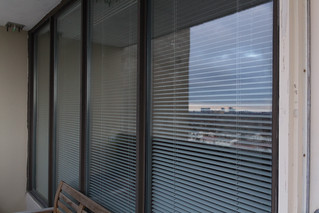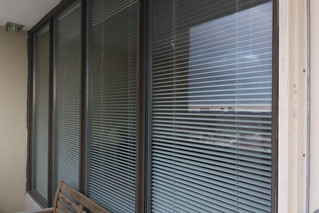Home › Forums › Let’s Talk Photography › Polarizing Filters
Tagged: Canon Rebel XT, Polarizing Filters
- This topic has 7 replies, 3 voices, and was last updated 10 years, 3 months ago by
vpatterson.
-
AuthorPosts
-
January 13, 2014 at 11:48 am #16107
vpatterson
ParticipantI have a Canon Rebel XT and my company bought a HOYA filter 52 mm pitch:0.75. We needed a filter so we could photograph glass without our reflection being shown. I am not a photographer and know nothing about filters. Can this filter be used for this reason, and if so how do I use it?
January 13, 2014 at 4:55 pm #16109cameraclicker
ParticipantA circular polarizing filer is the variety you want. The filter screws into the filter thread on the front of your lens and once threaded on, the front will still rotate. Look through the viewfinder and watch the reflection change as the filters is rotated. It may not completely remove the reflection but it should reduce it. It will also reduce light generally, a little, so that will have to be taken into account if you use an external light meter. TTL metering, used by the camera’s meter sees the reduction and reports it.
The CP filter will reduce reflections from non-metalic surfaces. If the reflection is from bare metal, it will not help much. Whether you are dealing with reflection from metalic or non-metalic surfaces, you can drastically reduce reflection without a filter if you can control the light source. Angle of incidence equals angle of reflection. If you can put the light where it will not reflect into the lens, the camera will not see the reflection. That said, everything the camera usefully records is probably reflected light, you are trying to remove only the objectionable reflections.
Some of the less expensive lenses allow the front to rotate when focusing or zooming. This will require care when using a CP filter.
January 13, 2014 at 5:51 pm #16112ebi
Participantthe filter isn’t the solution. You have to build a room around the reflective surface. I do this with V-Flats. It’s flawless, save for the small reflection you’ll have from where the lens shows through the white flat. You cut a hole in one of the walls so that you can slide the lens through. You may also see the folds of the flats but if you position them correctly, you won’t see them.
January 13, 2014 at 6:15 pm #16115cameraclicker
ParticipantEbi’s response suggests I may have mis-read the question. Beyond a CP filter, there are possibly several other options including V-flats and tents.
Perhaps our first question should be do you want to photograph a glass object or do you want to photograph through glass?
If it is a glass object, how big is it?
If you are photographing through glass, how close can you get to the glass and how far from the glass is the object you want to photograph? Is the glass tinted or clear?
January 14, 2014 at 8:46 am #16120vpatterson
ParticipantI work for a glass fabricating company. We are focusing on glass wall systems, when the glass is installed we like to go and photograph the glass. The glass wall systems are either exterior and /or interior. We would like to keep the reflections and glare to a minimum. The glass is typically clear, i.e. the clear glass has a green tint to it.
January 14, 2014 at 8:47 am #16121vpatterson
ParticipantAnd I am working with a fixed focal length Canon Rebel XT.
January 14, 2014 at 9:43 am #16122cameraclicker
ParticipantA glass wall sounds large. It might be cost prohibitive or impractical for other reasons to erect a tent or box around it. Choosing the time of day and how you light it might work. If it is dark outside and you light the inside, the camera can easily shoot through the glass and show the illuminated area with minimal reflection. Conversely, if you shoot from inside while the interior is relatively dark, and there is daylight outside, you should get minimal reflection, this might be the best time to try out a CP filter.
Here are two photos showing the effectiveness and limitations of a CP filter. I used a Canon Rebel T2i, Sigma 18-250 mm lens at 18 mm and a 72 mm Tiffen CP filter because the lens has a 72 mm filter ring.
This is without a filter
And, this is with the filter installed and adjusted to reduce reflection as much as possible
Click on an image and it will take you to a larger image on Flickr. You can arrow left/right to switch between the two and see the change caused by the filter. To minimize the time between photos, I shot the “with filter” shot first, then unscrewed the filter and shot the “without filter” photo.
If you are just worried about your reflection, you could put the camera on a tripod, set the 10 second timer and walk away. The camera can be made smaller in the reflection by moving it further from the glass and using a different, longer, lens to frame the image the same.
January 15, 2014 at 10:39 am #16135vpatterson
ParticipantThank you very much for your help. Your advise is great!
-
AuthorPosts
- You must be logged in to reply to this topic.


